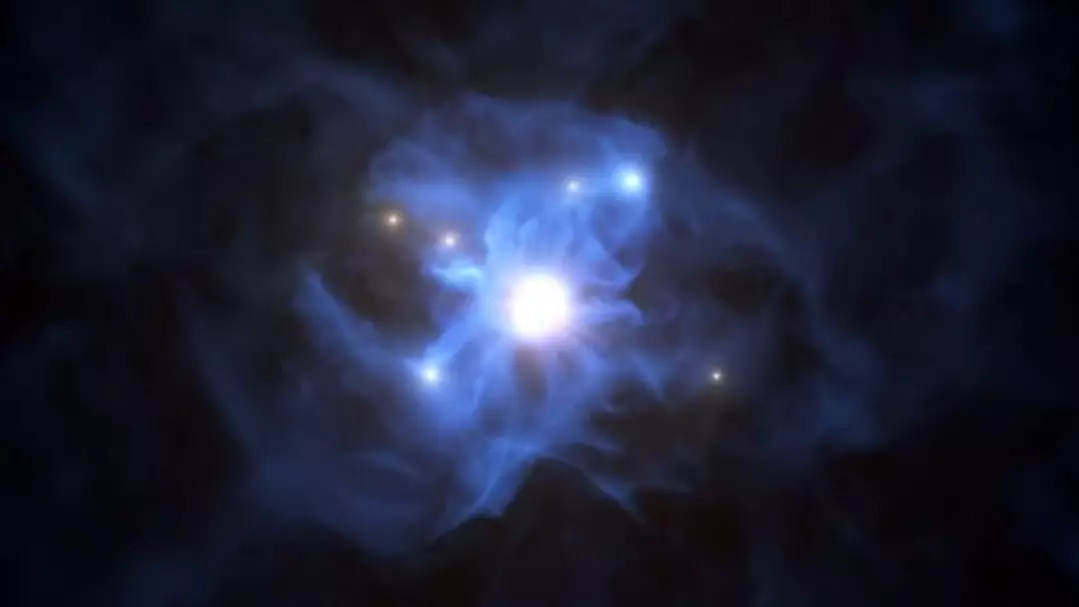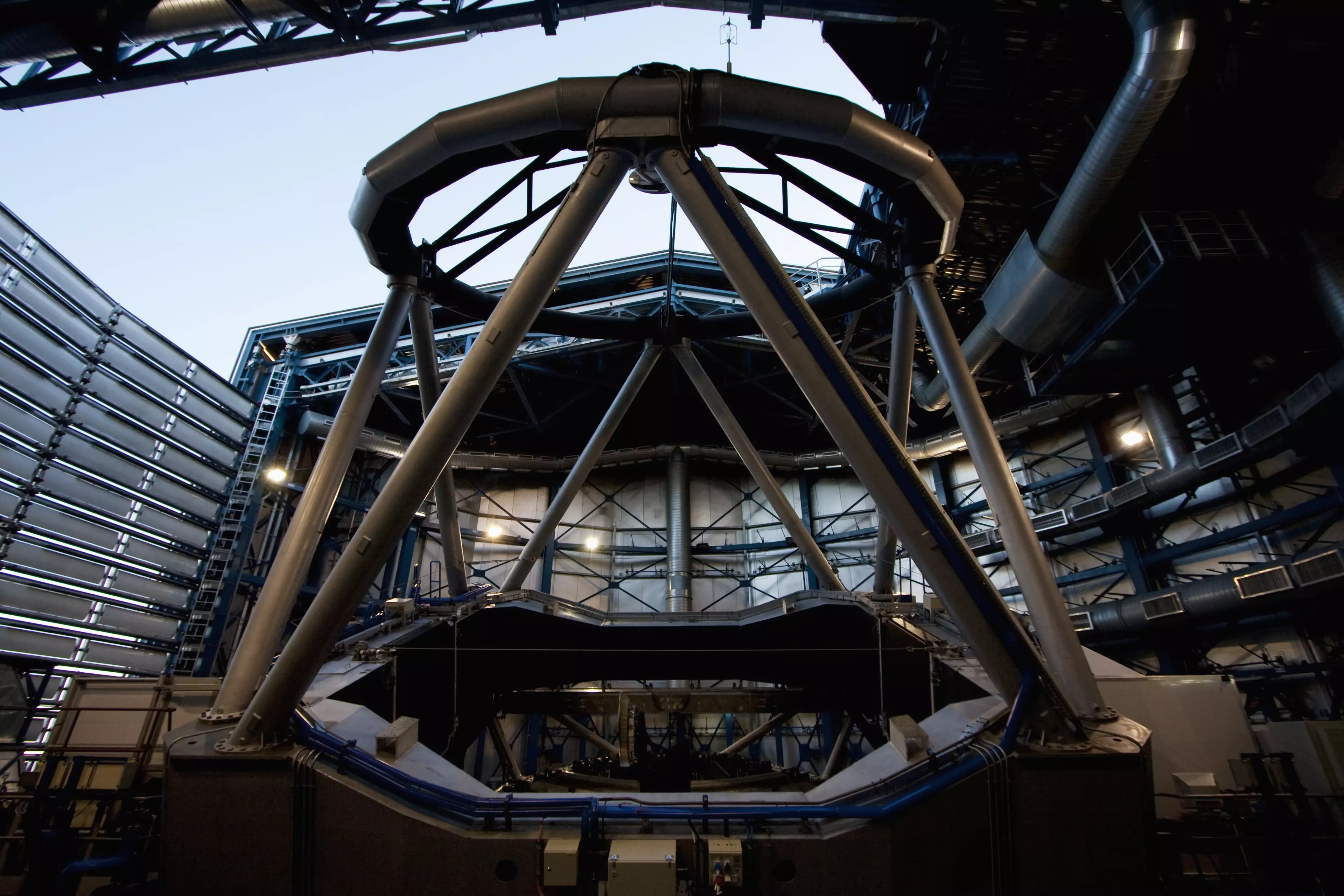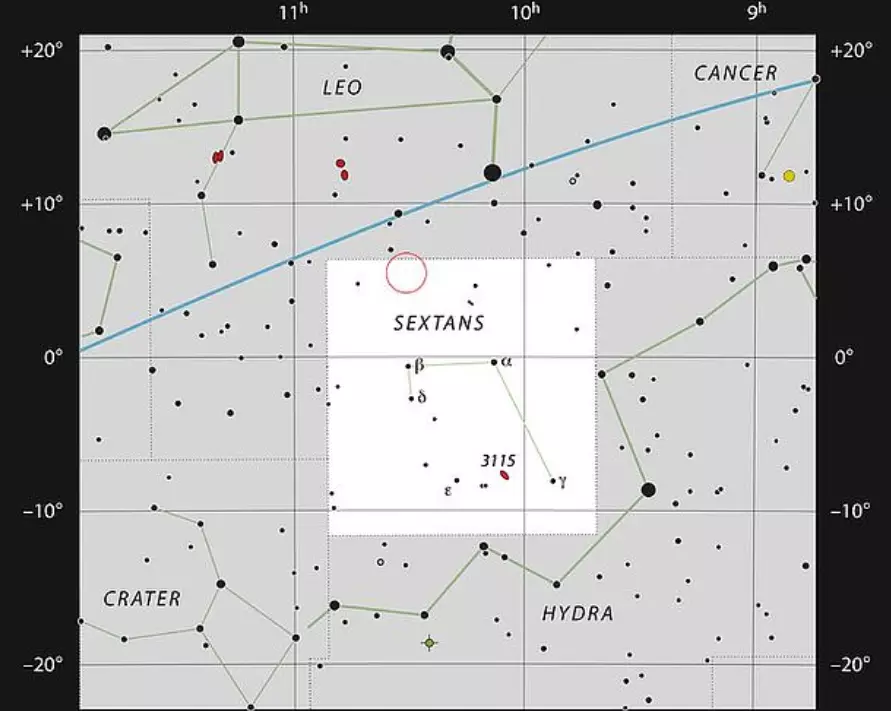
Astronomers have discovered six galaxies trapped in the gravitational 'spider's web' of a supermassive blackhole.
Researchers from the Italian National Institute for Astrophysics (INAF) believe it was formed 900 millions years after the Big Bang, making this the first time such a close grouping has been found within the first billion years of the universe.
This web of gas - which is more than 300 times the size of the Milky Way - was discovered by the European Southern Observatory's (ESO) Very Large Telescope (VLT).
Advert
These astronomers are very literal with their naming of large things, aren't they? 'Quick! Get the Very Large Telescope, I've spotted a supermassive black hole formed within a billion years of the Big Bang!'

Anyway, the discovery is important, because scientists have long puzzled over how these supermassive black holes amass this massiveness so rapidly - and this finding will help them figure it out.
Roberto Gilli, an astronomer at INAF and co-author of the study, said: "Our work has placed an important piece in the largely incomplete puzzle that is the formation and growth of such extreme, yet relatively abundant, objects so quickly after the Big Bang."
Advert
Marco Mignoli, lead author of the study and also an astronomer at INAF, added: "This research was mainly driven by the desire to understand some of the most challenging astronomical objects - supermassive black holes in the early universe. These are extreme systems and to date we have had no good explanation for their existence.
"The cosmic web filaments are like spider's web threads. The galaxies stand and grow where the filaments cross, and streams of gas - available to fuel both the galaxies and the central supermassive black hole - can flow along the filaments."

But how exactly did this space spider web come about? It's most likely got something to do with dark matter.
Advert
Colin Norman of Johns Hopkins University in Baltimore, USA, who was also a co-author on the study, said: "Our finding lends support to the idea that the most distant and massive black holes form and grow within massive dark matter halos in large-scale structures, and that the absence of earlier detections of such structures was likely due to observational limitations."
The team have called the supermassive black hole and its surrounding galaxies SDSS J1030+0524, which sounds like it was plucked straight from Elon Musk's list of baby names.
Barbara Balmaverde, yet another co-author and astronomer at INAF, said: "We believe we have just seen the tip of the iceberg, and that the few galaxies discovered so far around this supermassive black hole are only the brightest ones."
If you want to learn a hell of a lot about J1030+0524, then you can read their research here.
Featured Image Credit: ESO/L. CalçadaTopics: Science, World News, space